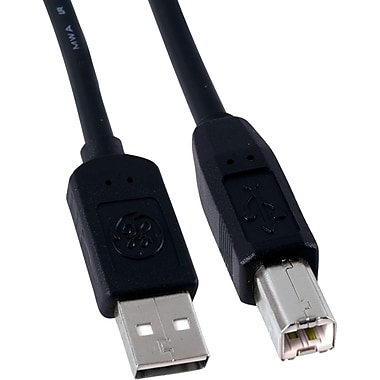Aaliyah was destined for greatness. She had so much raw talent, beauty and drive behind her that she probably would have been a household name today. Her song again "Try again" is kinda my theme song for building RC airplanes. I can't tell you how many times I've dusted myself off and tried again.
Unfortunately, Aaliyah died just as her career was starting to take off. She died on board a twin-engine Cessna 402B on August 21, 2001. Since this was a very long time ago we know exactly what happened. The plane was overloaded by a mere 700lbs.
Though she's not the first rock star to die in a plane crash there is something so basic about her story that can serve as a lesson. The weather was fine, the plane was working well, the pilot was capable of flight, there were no real problems to speak of. In very basic terms, the amount of thrust the engine could produce wasn't enough for the amount of weight this plane was carrying. When you do this with a car you throw a rod and then stand by the side of the road waiting for Tripple A. In planes the plane returns back to the ground.
So, what does this have to do with your radio controlled airplane? Everything. And I do mean everything. If you call me up drunk in the middle of the night stating that you're at the tattoo parlor and short of inspiration and you can't decide between a skull n' crossbones or an L.A. Dodgers tat and you ask me for my input, I would say put the letters G.o.T. on and if you got space C.o.T. There is so much truth and wisdom in these letters are things you will need to remember all your life.
G.o.T. (Grams of Thrust)
By now you've seen more than enough videos of people hooking up outrunner motors, a prop and a simple weight scale. They let it rip and shout out the Amps and the number of grams. One question remains, what the hell are they doing, and why should you care?
 |
| What's he using, a Hitec? |
Tangent time: Let's be honest. The notion that you can fly your little radio controlled plane miles away from where you are is exciting, right? You think about flying a plane ten miles away via a 5.8Ghz transmitter and you're standing in the middle of a field somewhere looking like Doc Brown from Back to the Future with white lab coat and antenna on a tripod with a small video screen that shows the video feed from the plane. Okay, I have to admit that this is cool. But, when you really start to look into what it takes to do this, it's a lot of weight. Thus the planes that do long range FPV are usually fairly big and heavy. Once again there's that weight issue creeping up. All your small, light planes won't work for this scenario, at least not now. The technology is improving and the gear is getting smaller in each generation. But the weight is the fundamental issue because as you add more gear to your plane, you'll need more thrust.
 |
| The SkyWalker is a famous FPV plane |
The third question you should ask yourself when you're looking to buy a new plane is "How much is this thing going to weigh?" The first question is "How much does it cost?" The second is "What's the wife going to say?"
Start with weight
What's the right motor, ESC, prop for the plane? All good questions, but not as important as "how much does this plane weigh when I have all my stuff on it?" If it's 500 grams than you need a motor and a propeller that are capable of producing 500 grams of thrust. This isn't the goal, it's the bare minimum. If you want some really cool performance you'll need one that can do 1.5 times the weight (750g).
Consider amps and the battery
Information is all over the board on the internet about various motors and propeller combinations. Usually, they are 2s (7.4 volts) or 3s (11.1 volts). Perhaps you'll get lucky and find that someone has done the work for you in advance.
Here's a video for an example. This can be found for under $20 including shipping. It weighs less than two ounces and can produce 1.2 Kg of thrust! That's enough to comfortably get a 2.5lb plane into the air. It will need a 40 amp ESC along with the 7x3 prop. This is running off of an 11.1v battery. This would be fantastic for an 800-gram plane. That would be around a 28-ounce plane. That is 28 ounces when the plane is finished, with all the gear on it. You need to add up the weight of the servos, motor, ESC, and battery. Oh yes, you can use lighter batteries if you're getting close to the weight limit. The trade off is that these lighter batteries have fewer milliamps of power. They will put out just as much power (11.1 volts) but will do it for a shorter period of time. The trade-off for less weight will be shorter flights.
FPV is one of those buzzwords in the industry. There are park flyers that can do FPV They can go short distances and produce so-so results. I expect this to get better in the future. If you want to go long range you'll need excess battery power, which means more weight. Which means a motor that can handle the larger weight. This usually is a stright line to a larger, ugly plane like a Skywalker.
Speed Controller
When you figure out the prop, motor and battery combination the last piece of the puzzle will be the speed controller. You'll know the total amps required for the plane. You'll need a speed controller that can easily handle the amount of energy required. In the example above the first prop and motor combination drew 32amps. So, can you use a 30 Amp ESC? I mean 32 amps is almost 30 amps and you won't be flying at full throttle all the time, right? My rule of thumb goes like this. Take 20% of 32 amps (6.4 amps) and add it to the 32 amps. That's 38.4 amps. A 40 amp ESC will work. It will work great, and you won't have to worry about it. Perhaps the 30amp ESC will work fine. There are a lot of variables. Is it exposed to cool air? How long will it be used at full throttle? One other question you may wonder, and I don't know the answer to this. What happens after a speed controller fries and your plane is still in the air? Do the servos still work? If not you've saved a few grams, a little room in your build, and a few dollars. If you have a dead plane in the air you're responsible for whatever damage it does and you're not going to be happy with the way the plane lands.
C.o.G.
The second tattoo I would suggest would be C.o.G. Before you get a plane in the air you'll need to know what the Center of Gravity is for the plane. If you've got a plane capable of producing enough thrust for the weight it's carrying, and everything is together, just make certain the plane is balanced at the center of gravity.
In retrospect, Aaliyah would probably still be alive today if the pilot simply would have done a few more calculations. The one thing I have learned from experience in life is that pushing the limits usually works in your favor 99 out of 100 times. You can speed on the freeway, you can run yellow lights, you can drink milk past the expiration date. But, it's that 1 time out of 100 that people never forget.











